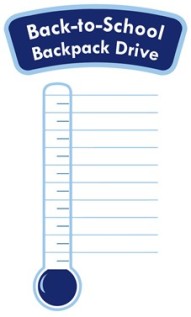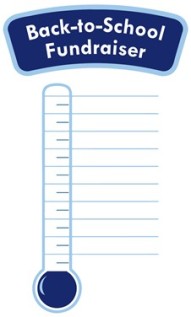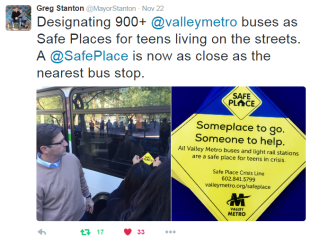Written by Elizabeth Smith Miller, Director of Marketing and Events, National Safe Place Network
Coffee is the most coveted morning beverage of humanity. Coffee is so popular, people write about how great it is—a lot. The Huffington Post alone has a full web page dedicated to numerous blog posts about coffee, one of which is titled “19 Things You Didn’t Know About Coffee.” The article shares some interesting information. For example, legend says “coffee was discovered by a goat herder,” “a coffee plant can live up to 200 years,” and “coffee beans can vary in color”—not for the strange “cat” reason shared that no one would spend money on. Anyhow, who knew? Someone must really love coffee to dedicate precious time just to write about the goodness these little beans bring to the world.
Coffee can be consumed in many ways; however, most people like traditional coffee—black or with cream and/or sugar. But there are also some coffee concoctions that are unique, yet delicious:
- Thai iced coffee
- Steaming mocha cocoa
- Turkish coffee
- Creamy iced vanilla caramel coffee
- Iced espresso marvo
- Coffee imperial


Image credit: http://www.food.com/ideas/15-easy-coffee-drinks-6102?c=10188
These flavors are actually easy to make! You can get the recipes here.
Because there are so many different ways to make coffee, we thought the topic might offer a fun way for you to get to know your NSPN family. We asked them, “How do you like your coffee?”
· Laurie Jackson, President / Chief Executive Officer: Flavored with a little cinnamon and cream
· Tammy Hopper, Chief Strategic Initiatives Officer: In someone else’s cup. I am so not a coffee drinker.
· Shauna Brooks, Principal Investigator: Medium Roast in a large mug with two packs of Splenda and a 4-count pour of real heavy cream.
· April Carthorn, General Specialist: Not at all.
· Sherry Casey, Operations and Administration Manager: Iced vanilla coffee
· Zach Elmore, Operations Specialist: Black. Regular in the morning, decaf after noon.
· Kim Frierson, Training Specialist: Don’t drink coffee anymore. Made me sick while I was pregnant and I never picked it back up. I do enjoy a good cider or lemonade, depending on the season.
· Susan Harmon, Director of Safe Place National Operations: I love strong coffee – but not Starbucks strong – with nothing in it.
· Rachel Hurst, Development Associate: I only like the smell of coffee. Coffee is a lie because it smells amazing but tastes horrible. I don’t even like coffee ice cream.
· Hillary Ladig, Communications Coordinator: It depends on my mood. Somedays, I like it black and other days, I like it with a generous portion of milk. I also enjoy a good cappuccino – it’s great for the soul.
·Autumn Sandlin, Marketing & Communications Intern: ICED! If I drink it hot, I have to have lots and lots of sugar and milk or creamer. I want it as far from black as possible.
· Elizabeth Smith Miller, Director of Marketing and Events: I love coffee! To me, the perfect cup is 10oz of “Golden French Toast” or “Wild Mountain Blueberry” straight from the Keurig with a 3 count pour of “Sweet Cream” creamer. I can drink it all day – everyday. YUM
· Eric Tadatada, Technical Assistance Specialist: I like my coffee with two creams and three sugars.
Learn more about your NSPN family at https://nspn.memberclicks.net/our-team.
How do you like your coffee? Feel free to let us know by commenting below.









